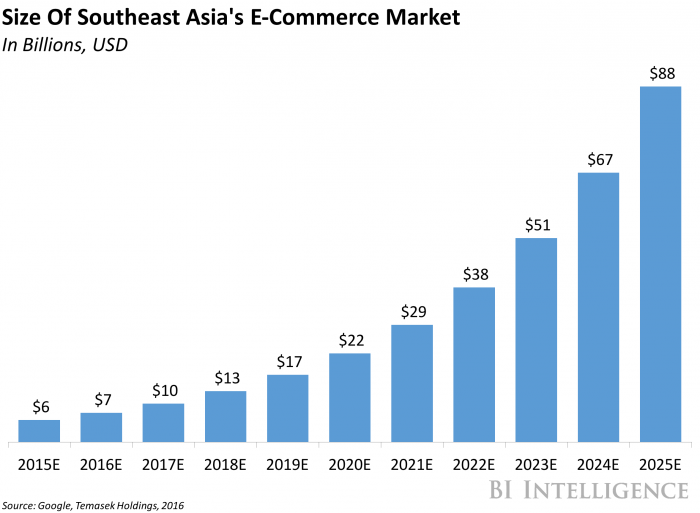
The Most Underrated Difficulty in Southeast Asian E-Commerce Market
Between now and 2025, e-commerce in Southeast Asia is expected to grow 8X bigger and hit $102 billion in sales.
Despite the enormous growth potential, the region is extremely difficult for brands to tackle due to its fragmentation across the 10 ASEAN countries.
On top of regulatory differences, unique languages and geographical difficulties, the most underrated challenge for brands, who want to win online face in Southeast Asia, is marketplace management in a highly fragmented market.
What is Marketplace Management?
Marketplace management is the dynamic management of inventory, prices, order processing and shipping across multiple e-commerce platforms.
It gives you access to a truly global population of customers, all managed from a multi channel ecommerce solution.
Why is This the Real Challenge?

Because of the multitude of e-commerce platforms attracting significant traffic month over month.
For example, in Malaysia , five different e-commerce dominating the online monthly traffic are Lazada (12.6 million), Shopee (11.1 million), 11street (4.4 million) and Mudah (3.6 million).
In the United States, the e-commerce marketplace is much less fragmented.
Here is a breakdown of the three horizontal e-commerce marketplaces in the top 50 of total traffic in the country: Amazon (1,500 million), Walmart (166.5 million) and Target (88.6 million).
What is The Solution?
A single platform for multichannel marketplace management. This saves time, money, efforts and resources.
As a result, many smart entrepreneurs are building companies to tackle this problem, including SingPost, Hashmicro, SelluSeller (product of Anchanto), CombineSell, SiteGiant, webShaper and Red Dino.
However, attempting to execute across multiple online channels and markets is no easy task. It’s just the stakes are too high to not be able to do it right.
It’s about the data that ultimately leads to better decision-making for businesses.
Brands needs to have real-time access to sales promotion data when operating an online multi-channel selling model because having this data and visibility enables you to change model and partners swiftly if required.
Be Prepared for The Future.
With 78% of ASEAN small-and medium-sized businesses (SMEs) planning to invest in software between now and the end of 2019, marketplace management software companies are in a great position to ride the e-commerce wave.
As e-commerce continues to grow in the region more challenges will arise because of the uniqueness of Southeast Asia.
But there is no doubt innovative solutions will be brought to the table by the region’s growing base of talented entrepreneurs.
What is struggle standing in the way of your online business? Do let me know in the comment section below.


